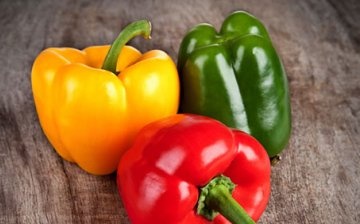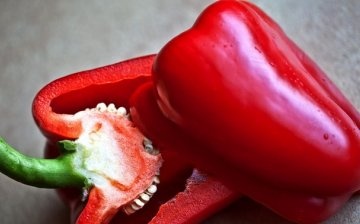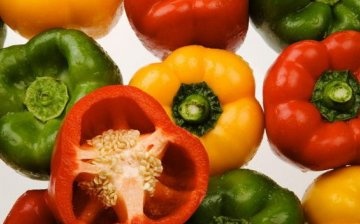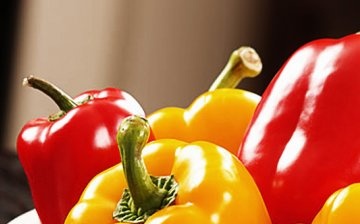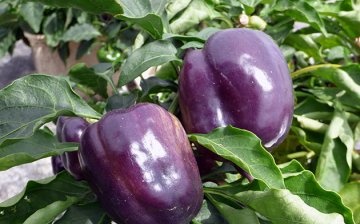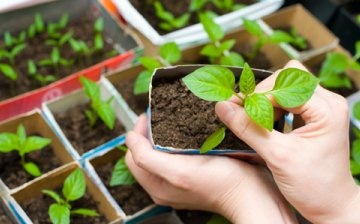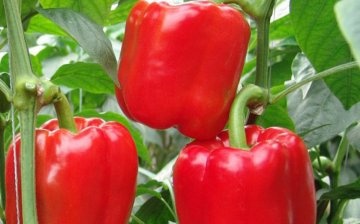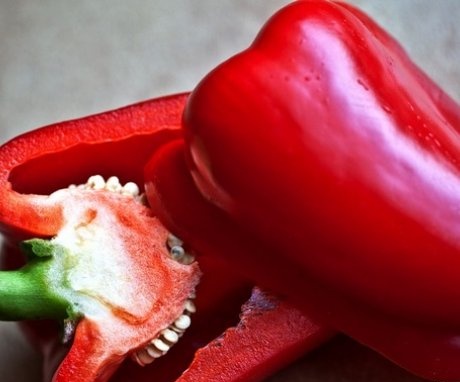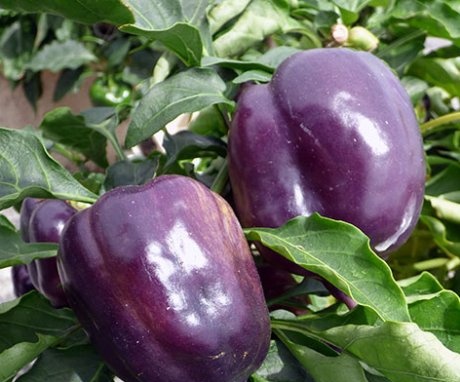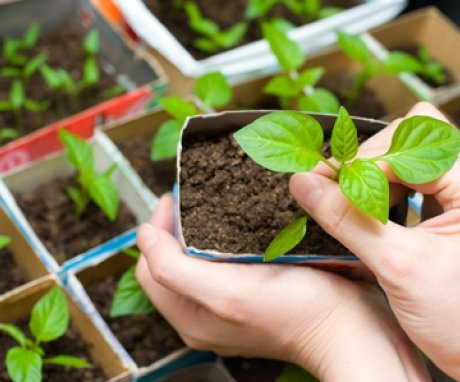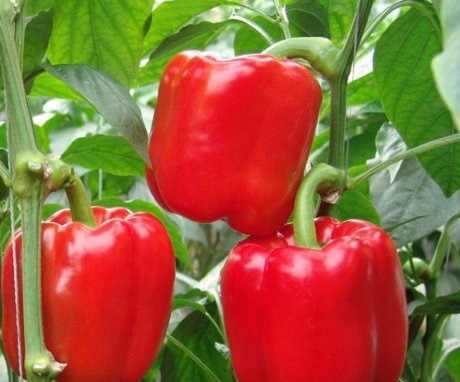The best sweet peppers: early ripening, mid-ripening, late-ripening and hybrid
Pepper, a vegetable rich in vitamins and microelements, is unpretentious in care, subject to the peculiarities of cultivation. Bell peppers, as a rule, do not have a good keeping quality. Therefore, in order to extend the harvesting period, you can grow sweet peppers with different ripening periods on your site.
Content:
- Early maturing varieties
- Mid-season varieties
- Late ripening
- The best hybrid varieties
- Some tips for growing and caring for bell peppers
Early maturing varieties
Early varieties of sweet peppers with a ripening period of up to 100 days are good to grow in the northern regions: they allow you to get a harvest in a short time. The most popular early varieties:
- The swallow is a high-yielding variety: up to 15 peppers are harvested from one bush. Fruits with a ribbed cone-shaped surface up to 10 cm long and weighing about 80 grams. technical ripeness (fruit formation) after 21 days, and full ripening of fruits - after 130 days from the moment transplants into the ground. Unripe fruits can be used in salads. The variety is resistant to verticillium disease.
- Snow White - the variety got this name due to the milky white color of the peppers in technical ripeness, which occurs in 100-110 days. Fruits are smooth, conical with thick walls, up to 12 cm long and weighing up to 100 g.
- Dwarf is a frost-resistant variety with a ripening period of up to 100 days (technical ripeness). The fruits are fleshy, smooth, conical, red in biological ripeness, weighing about 80 g. The variety is distinguished by the compactness of the plant, resistance to diseases and a high content of vitamin C in fruits.
- Winnie the Pooh - according to gardeners, this variety is a real miracle: it is recognized as one of the most delicious and high-yielding sweet pepper varieties, suitable for growing in almost all regions of Russia. The fruiting period is 108-110 days. Fruits with weak ribbing, red at the stage of biological ripeness, weighing about 50 g.
- Lumina is a popular variety in the middle lane. Fruits are cone-shaped, weighing about 115 g, golden-white in biological maturity. It is unpretentious in care, yields a crop even with insufficient watering in a dry summer, however, in these conditions, the fruits acquire a bitter taste. The fruits tolerate transportation well.
Mid-season varieties
In the open field, mid-season varieties (ripening period 110–130 days) of sweet pepper are grown in the south of Russia, in the middle lane it is recommended to grow in greenhouses.
The most popular mid-season varieties:
- Tenderness - grows well indoors. Fruits of a conical shape, with a blunt top, weighing 50 g, are appreciated for their taste. Ripening period 120-130 days. The peculiarity of the plants of this variety is that they are standard and require a garter.
- Novogogoshary is also a standard plant that needs to be formed half a meter high. Fruits are slightly flattened, with thick walls, weighing up to 130 g. The fruiting period can last up to 40-45 days. The fruits of this variety are characterized by good transportability and keeping quality.
- A California miracle - highly appreciated by gardeners.The fruits are large, cubic in shape, red in biological ripeness. Seeds are characterized by good germination. If the growing conditions are not followed, the fruits may have a bitter taste. Bushes about 70 cm high, the number of fruits per plant is 7-10.
- Gift of Moldova - one of the most popular and high-yielding varieties of sweet pepper, appreciated for its lightness, unpretentiousness in leaving and resistance to diseases... Fruits are oblong, up to 8-9 cm long, weighing 60-70 g.
Late ripening
Late-ripening sweet pepper varieties, like mid-ripening ones, only have time to ripen in the open field in the southern regions, therefore, in regions with a cold climate, such varieties are grown in greenhouses.
The most popular late-ripening varieties:
- Gladiator is a medium late high yielding Dutch variety. Fruits of a pyramidal shape, in biological ripeness of a rich yellow color, weighing up to 350 g.
- Aristotle ex 3 r f1 - medium late variety, resistant to TMV and bacterial spotting. Fruits resemble a cylinder in shape, red (ripe), thick-walled, weighing up to 200 g. It tolerates transportation well.
- Black Cardinal - a variety bred in Italy. The fruits are in the form of a truncated pyramid, black in technical ripeness and red in biological ripeness, with a very juicy pulp.
- Bell - it got its name because of the unusual shape of the fruit for pepper, reminiscent of a flower bell... Fruits with a spicy sweet and sour taste. Pepper of this variety belongs to perennial plants, and for the winter it is recommended to transplant it in containers and place it in a lighted place. Up to 2 kg of peppers are harvested from one plant. Ripening period 150 days.
The best hybrid varieties
When growing hybrid varieties, it is important to remember that you will have to buy seeds every year. In such seed varieties, the qualities of the mother plant are not transmitted. But, it should be noted that hybrid varieties have undeniable advantages:
- High productivity.
- Resistance to diseases.
- Large fruits.
- Excellent taste.
Popular hybrid varieties:
- Madonna F1 is a disease-resistant, high-yielding and drought-resistant variety with a ripening period of 60-65 days. Fruits with thick walls weighing 180-200 grams, light green in technical ripeness and red in biological.
- Maria F1 is a large-fruited, mid-season, high-yielding hybrid. Fruits are round, slightly flattened, weighing up to 120 g. Plants of this variety are semi-stemmed, semi-determinate, reaching a height of 80-85 cm.
- Othello F1 is an early ripe hybrid. Fruits of the original violet color in technical ripeness and brown in biological color, weighing up to 108 g. The variety is valued for its excellent yield, simultaneous ripening of fruits, independent regulation of branching.
- Maxim F1 is a mid-season hybrid. Fruits are oblong, 9-10 cm long, weighing 70-80 g, original purple color in technical ripeness and cherry-red color in the ripening phase. The variety is valued for its good fruit set, stable yield and resistance to verticillary wilt.
Some tips for growing and caring for bell peppers
Sweet peppers are grown mainly (even in the southern regions) by the seedling method. Seeds on seedlings, having previously prepared, are sown in February.
Seed preparation consists of:
- Disinfection - soak for half an hour in a weak (1%) solution of potassium permanganate, then rinse thoroughly with water.
- Treatment with growth stimulants.
- Treatment with antifungal drugs.
After processing, the seeds are sown in separate containers to a depth of 0.5-1 cm. To germinate sweet pepper seeds, it is desirable to maintain a temperature of 25-30 degrees. After germination of seedlings (usually on the fourth day), the temperature is lowered to 18 degrees for a week, after which it is again raised to 25 degrees. Lowering the temperature prevents the seedlings from pulling out.
Experienced gardeners recommend additionally highlighting sweet pepper seedlings in the phase of 3-5 true leaves for 12 hours a day. Before planting on the garden bed, seedlings can be fed twice:
- The first time - after the appearance of three real leaves.
- The second time is in the phase of eight leaves.
For fertilizers take 10 liters of water:
- Urea - 50 g
- Potassium salt - 30 g
- Superphosphate - 125 g.
After fertilization, the seedlings should be immediately watered with clean water. Sprinkle soil in containers as the seedlings grow. Two weeks before planting on the beds, the seedlings need to be hardened: in the afternoon the plants are taken out onto the balcony or loggia (if the weather is warm), and at night they are brought back into the room.
A week before transplants you can feed the plants with potassium salt on the garden bed, and a day before planting - spray growth stimulant.
Such processing contributes to better vitality of pepper, a 2-fold decrease in the content of nitrates in fruits and an increase in yield by 30-40%.
Seedlings are ready for transplanting into the ground at the age of 55 days: the plants have 12 leaves each, reach a height of 25 cm, have a rather thick stem and acquire an even green tint. The soil must be warmed up to a temperature of at least 15 degrees.
It is advisable to add to the soil for planting pepper per 1 square meter:
- Phosphate fertilizers - 40 g.
- Humus or compost - 1 bucket.
- Nitrogen fertilizers - 30 g.
- Potash fertilizers - 40 g.
Seedlings are transplanted into holes, which are pre-moistened with 2 liters of water each. Planting density is determined by the variety's characteristics:
- Low-growing peppers are planted with an interval of 15 cm.
- Medium-sized peppers - at a distance of 25 cm.
- Tall plants - at a distance of 35 cm.
The ridges are usually made about a meter wide and half a meter apart. Since sweet peppers are a thermophilic plant, it is more advisable to grow them indoors. To stimulate growth at the initial stage of development, it is recommended to remove one lower bud and all leaves and branches before the first branch on the main shoot. Remove diseased and sterile branches too.
An important part of caring for sweet peppers is timely watering and maintaining a constant (without sudden changes) temperature in the greenhouse. With a lack of moisture, the plant is affected by gray rot, and temperature drops cause a significant decrease in yield.
Tall and hybrid varieties need a garter: one or two of the strongest shoots are tied to a trellis.
Pepper dressing is recommended chicken droppings: 3-4 treatments per season. Litter is taken in a ratio of 1:10. Such dressings can be alternated with foliar, for example, nitrophos. In wet weather, it is recommended to remove side shoots from peppers (pinch), in dry and hot weather, pinching, on the contrary, is not done, since the foliage prevents moisture evaporation from the soil. Green peppers are often attacked by spider mites. To protect against pests use special drugs: Karbofos or Keltan. Pollination of plants with wood ash will serve as a good protection.
Do not grow bell peppers next to bitter peppers: although the flowers of these plants are bisexual and pollinate on their own, insects that accidentally enter the greenhouse can cross-pollinate the peppers. As a result, sweet pepper fruits will acquire a bitter taste. Recommended precursors of pepper in the garden: toapusta, tpumpkin, aboutgurtsy, morc, luk, toabachok... It is highly undesirable to plant pepper after: tomat, potatoes, eggplant, physalis... This is not to say that caring for sweet peppers is very difficult, but still, in order to get a good harvest, you will have to try a little.
More information can be found in the video.



